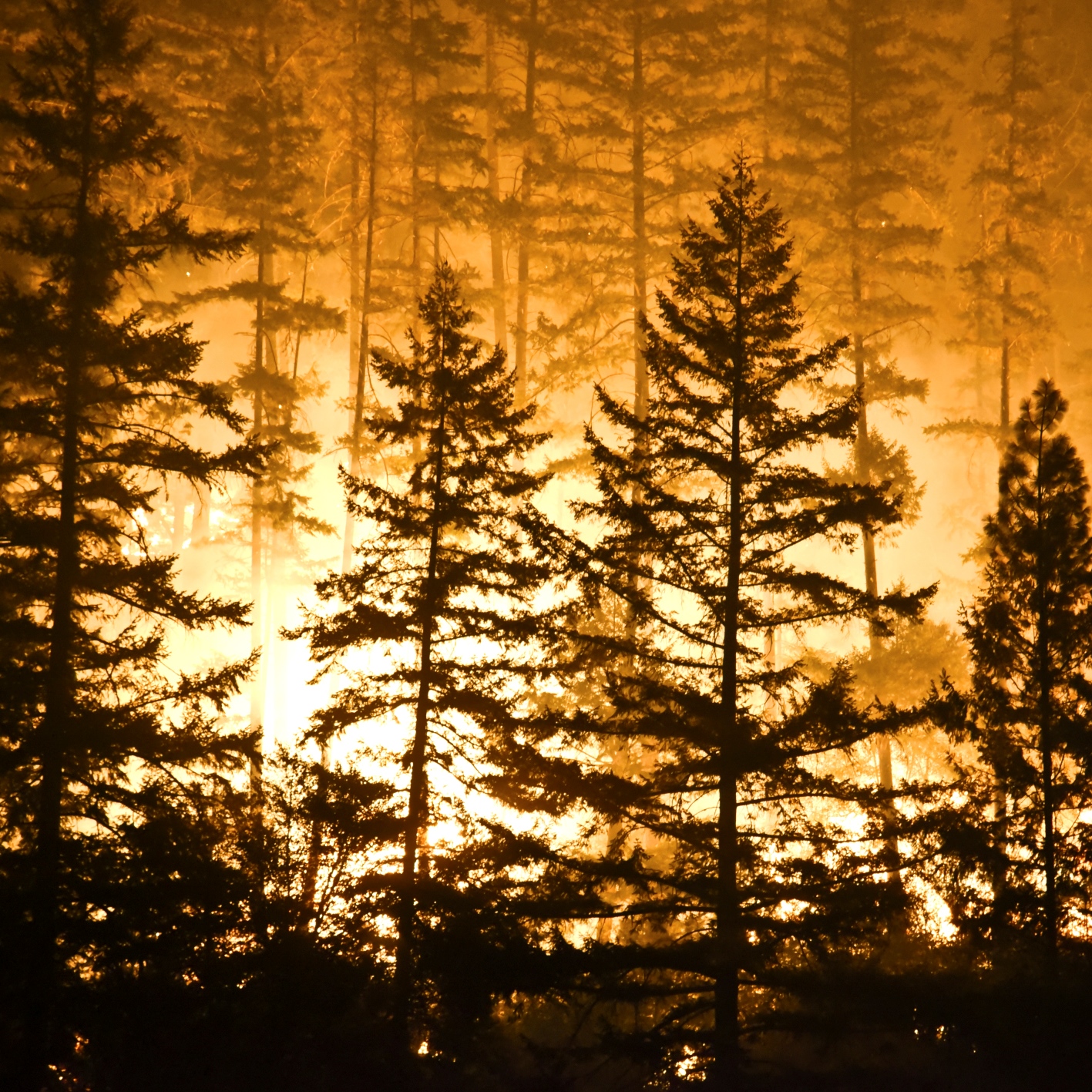Are Western US Wildfires Really Worse This Year?
September 14, 2017 by Paul AusickOver the past 10 years in the state of Montana, summer wildfires have burned an average of about 317,000 acres a year. So far this year more than 880,000 acres have burned across the state and cost two firefighters’ their lives.
Nationally, for the year to date the National Interagency Fire Center (NIFC) has logged 48,607 fires that have burned 8.34 million acres. It is one of the three most destructive years in the past 10, and it won’t really be over in the West until cooler, wetter weather arrives to suppress the flames.
The reasons given for this year’s heavier than usual burning range from not enough logging to too much logging, with a dash of climate change thrown in.
Congress is considering a variety of natural resources bills, the majority of which come down on the side of increased extraction of resources like oil, gas and timber. The “Resilient Federal Forests Act of 2017” (HR 2936), for example, aims to increase industrial logging across all 155 U.S. national forests and public forests managed by the U.S. Bureau of Land Management.
Essentially the proposed act authorizes the removal of what supporters believe are dense stands of dead and dying trees that contribute to destructive fires. Intuitively it makes sense that thinning these areas removes fuel that feeds the fires. California’s Democratic governor, Jerry Brown, has said that the 102 million dead trees in his state increases wildfire risk. Lawsuits and existing legislation have stalled thinning projects for years.
Utah Congressman Rob Bishop (R), chairman of the House Natural Resources Committee, states the case this way:
A lack of active management has left our forests overly dense and stocked with dead and dying trees that feed catastrophic wildfires. As management decreases, forest health deteriorates and fires grow in size, density and cost.
There is evidence, however, that the rate of severe (“catastrophic”) forest fires is either within or below its historical range in 42 of 43 regions analyzed in a 2015 study by William L. Baker of the University of Wyoming. Baker notes in the study’s abstract:
Programs to generally reduce fire severity in dry forests are not supported and have significant adverse ecological impacts, including reducing habitat for native species dependent on early-successional burned patches and decreasing landscape heterogeneity that confers resilience to climatic change.
That sentence is packed with specialized terms like “fire severity” and “dry forests,” but its sense is clear: adopting programs that encourage more logging/thinning to reduce wildfires doesn’t have any positive effect on wildfire severity and does have significant negative effects on the forest ecosystem.
Baker concludes:
… [I]nfrequent high-severity fires in dry forests are not a consequence of poor forest management over the last century that can be fixed. Dry forests were historically renewed, and will continue to be renewed, by sudden, dramatic, high-intensity fires after centuries of stability and lower-intensity fires.
Philip Higuera, professor of fire ecology at the University of Montana, said in a recent interview that 2017 is neither unusual nor unique as a fire year, even for the new 21st century. The record fire season in the Northern Rockies remains 1910 and Higuera does not expect this year to beat that record.
Higuera argues against more logging to clear the fuel available to wildfires:
That [idea] is based on the assumption that fires are occurring because there is more fuel available to burn than in the past. That’s generally not what’s driving this. It’s the drought. It’s true that if cut, there is less fuel in the forests. But in a lot of cases, there is what’s called slash—woody debris—left on the ground [after the trees are logged] that will carry fire across the forest floor, which is what you need for it to spread.
The simple answer—if you want to eliminate fire, then pave it. There will be no fire.
Sponsored: Want to Retire Early? Here’s a Great First Step
Want retirement to come a few years earlier than you’d planned? Or are you ready to retire now, but want an extra set of eyes on your finances?
Now you can speak with up to 3 financial experts in your area for FREE. By simply clicking here you can begin to match with financial professionals who can help you build your plan to retire early. And the best part? The first conversation with them is free.
Click here to match with up to 3 financial pros who would be excited to help you make financial decisions.
 24/7 Wall St.
24/7 Wall St.